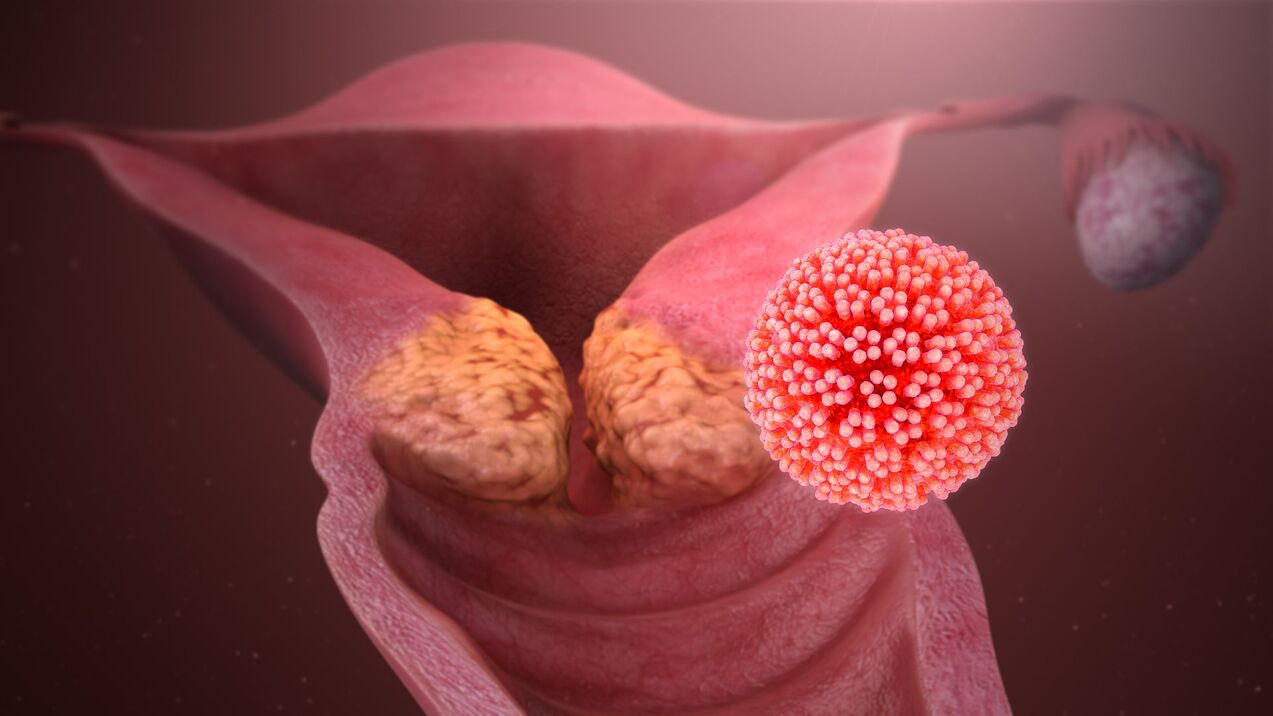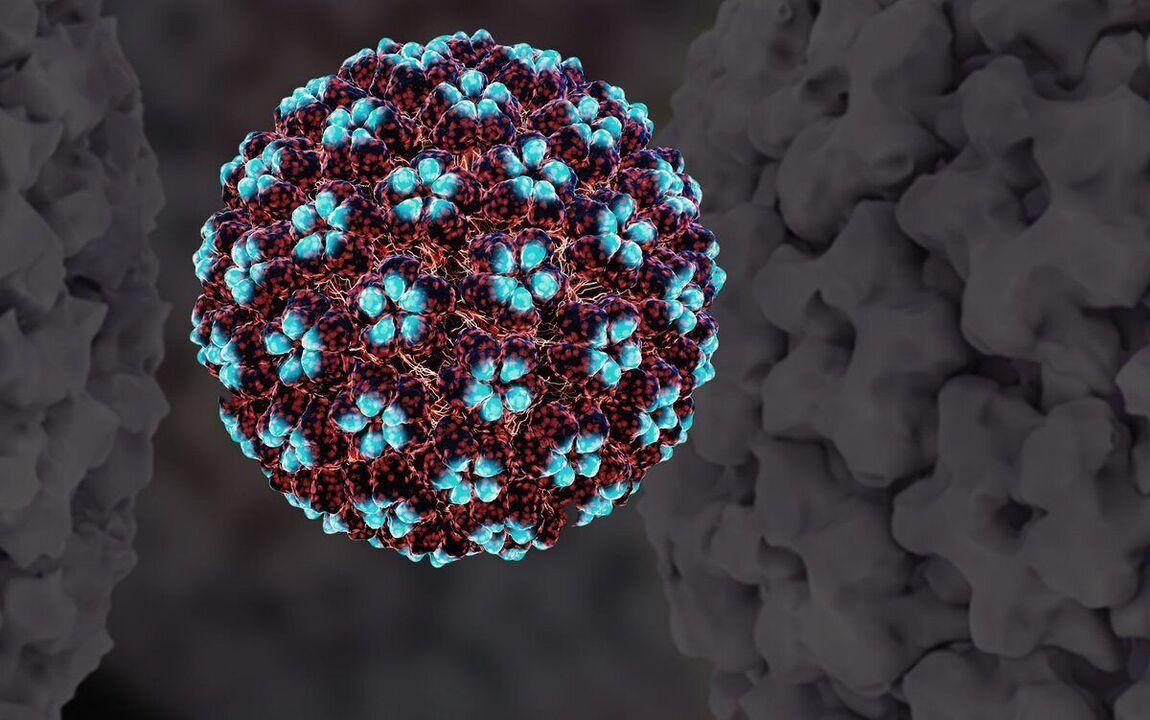Human papillomavirus (HPV) is an extremely common sexually transmitted infection in the world.
The peculiarity of this infection is that it may not manifest itself for many years, but eventually leads to the development of benign (papilloma) or malignant (cervical cancer) diseases of the genital organs.

Types of human papillomavirus
More than 100 types of HPV are known. Types are special "subspecies" of a virus that are different from each other. Types are designated by numbers that were assigned to them when they were discovered.
The high-risk group for cancer includes 14 types: 16, 18, 31, 33, 35, 39, 45, 51, 52, 56, 58, 59, 66, 68 (these are related to the development of cancer)cervical cancer).
In addition, low carcinogenic risk categories are known (mainly 6 and 11). They lead to the formation of genital warts (genital warts, papillomas). Papilloma is located on the mucous membranes of the vulva, vagina, perianal area, on the skin of the genital organs. They almost never become malignant, but lead to significant cosmetic defects in the genital area. Warts on other parts of the body (hands, feet, face) can also be caused by these viruses or can have a different origin. In subsequent articles, we will discuss "high-risk" and "low-risk" HPV types separately.
Human papillomavirus infection
The virus is transmitted mainly through sexual contact. Almost all women get HPV sooner or later: up to 90% of sexually active women will get this infection during their lifetime.
But the good news is that the majority of people who are infected (about 90%) get rid of HPV without medical intervention within two years.
This is a normal process of infection caused by HPV virus in the human body. This period is enough for the human immune system to completely clear the virus. In such a situation, HPV will not bring any harm to the body.Meaning, if HPV was detected some time ago, and not now, this is completely normal!
It must be remembered that the immune system works in different people at "different speeds". In this regard, the rate of HPV clearance can be different for sexual partners. Thus, a situation may arise where HPV is detected in one of the sexual partners but not in the other.

Most people get HPV soon after they become sexually active, and many will never know they have HPV. Permanent immunity is not formed after infection, so reinfection is possible both with the same virus encountered and with other viruses.
"High-risk" HPV is dangerous because it can lead to the development of cervical cancer and some other types of cancer. "High-risk" HPV does not cause other problems.
HPV does not lead to the development of inflammation on the mucous membranes of the vagina / cervix, menstrual irregularities or infertility.
HPV does not affect the ability to conceive and become pregnant.
Babies with "high-risk" HPV are not transmitted during pregnancy and delivery.
Diagnosis of human papilloma virus
It is practically meaningless to have an HPV test for high cancer risk before the age of 25 (except for women who begin to become sexually active early (before age 18)), because at this time it is most likelydiscovered an early virus. to the body itself.
After 25-30 years, it makes sense to do an analysis:
- along with cytological analysis (PAP-test). If there are changes in the PAP - and "high-risk" HPV testing, the situation needs special attention;
- The long-term persistence of "high-risk" HPV in the absence of cytological changes should also be noted. Recently, the sensitivity of HPV testing for prevention of cervical cancer has been shown to be higher than that of cytology, and therefore the determination of HPV alone (without cytology) is approved asAn independent study for cervical cancer prevention. in the United States of America. However, in our country, annual cytological examination is encouraged, so combining the two studies seems reasonable;
- after treatment for dysplasia/precancerous/cervical cancer (absence of HPV in the post-treatment analysis almost always indicates successful treatment).
For the study, a cervical smear should be obtained (vaginal material may be studied, however, as part of the screening process, cervical material should be obtained).
Analysis must be given:
- 1 time per year (if "high-risk" HPV was previously detected and analyzed with cytology);
- 1 time in 5 years if previous analysis was negative.
It is almost unnecessary to perform a low-risk HPV analysis. If papillomas are not present, this analysis makes no sense in principle (viral transport is possible, there is no treatment for the virus, so it is not known what to do next with stool results). volume).
If papillomas are present, then:
- usually they are caused by HPV;
- they must be deleted regardless of whether we find 6/11 categories or not;
- if we take the smear it is taken directly from the papillomas themselves and not from the vagina/cervical.
There are tests to detect different types of HPV. If you periodically get tested for HPV, pay attention to which specific types are included in the analysis. Some labs only do research on types 16 and 18, others - on all types together. It is also possible to perform a test to identify all 14 "high-risk" viruses in a quantitative format. Quantitative features are important for predicting the likelihood of developing precancerous and cervical cancer. These tests should be used in the context of cervical cancer prevention and are not a stand-alone test. Analysis of HPV without cytological results (PAP test) usually does not allow to draw any conclusions about the patient's health status.
There is no such analysis to determine whether the virus in a particular patient is "going away".

Treatment of human papilloma virus
There is no medical treatment for HPV. There are treatments for conditions caused by HPV (papilloma, dysplasia, precancerous, cervical cancer).
This treatment should be done by surgical methods (freezing, laser, radioactive knife).
There are no "immunostimulators" associated with HPV treatment and should not be used. There are no drugs widely known in our country that have passed adequate tests showing their effectiveness and safety. There are no protocols/standards/recommendations that cover these drugs.
The presence or absence of cervical "erosion" does not affect HPV treatment strategies. You can refer to more about situations that need to be treated for erosion in the article "Erosion or no erosion? ".
If the patient has no complaints, and there are no papillomas/changes on the cervix on colposcopy and according to the PAP test, then no medical procedure is needed.
Just reanalyze once a year and monitor the condition of the cervix (annual PAP test, colposcopy). In most patients, the virus will "leave" the body on its own. If it does not go away, it is completely unnecessary that it will lead to the development of cervical cancer, but control is necessary.
There is no need to treat a sexual partner (unless both partners have genital papillomatosis).
Prevention of human papillomavirus infection
Vaccines have been developed to protect against HPV types 16 and 18 (one of the vaccines also protects against types 6 and 11). HPV types 16 and 18 are responsible for 70% of cervical cancers, which is why it's so important to protect against them. Routine immunization is applied in 45 countries around the world.
Condoms (not 100% protection).
The only method that provides 100% protection is to abstain from sex. I'm not campaigning for him in any way, I'm just feeding to think.














































































